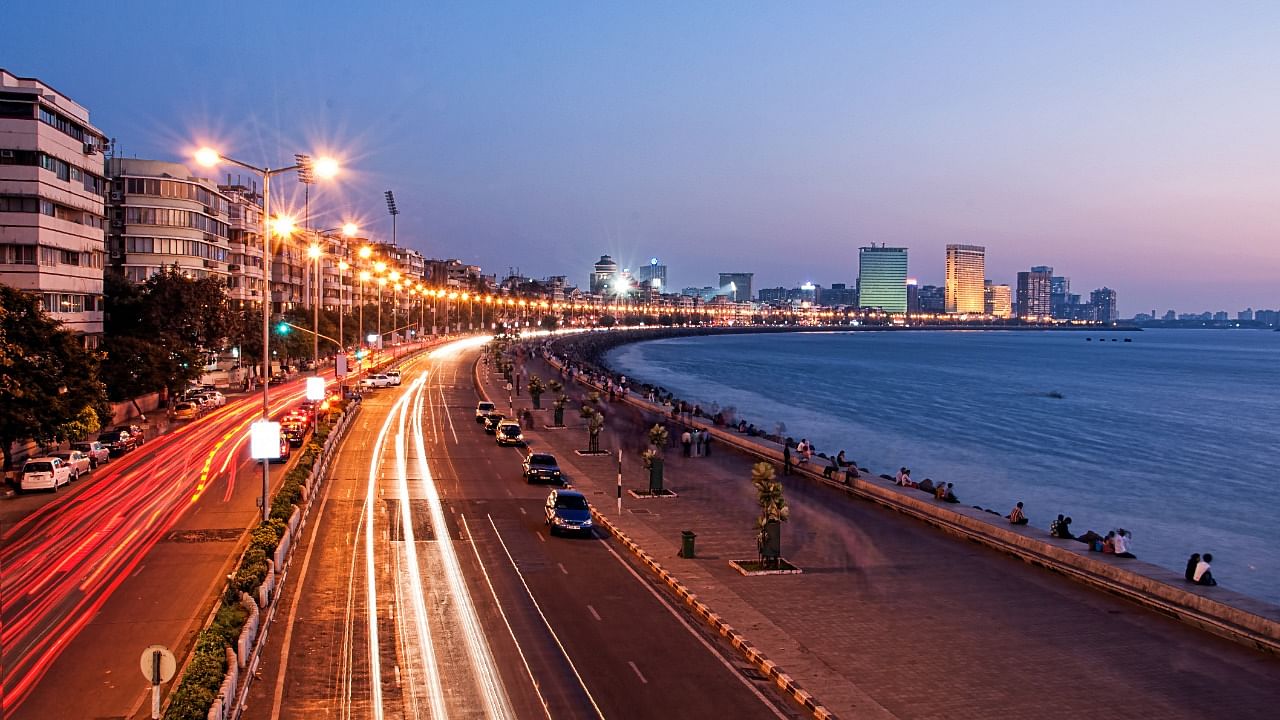
The sea-level rise in coastal Indian cities could lead to some properties and road networks being submerged in Mumbai, Kochi, Mangalore, Chennai, Visakhapatnam, and Thiruvanathapuram by 2050.
An analysis by RMSI, a global risk management firm has found that Haji Ali dargah, Jawahar Lal Nehru Port Trust, Western Express Highway, Bandra-Worli Sea-link, and Queen’s Necklace on Marine drive — all in Mumbai — are at risk of submergence, according to a report by Hindustan Times.
RMSI took findings from the Intergovernmental Panel on Climate Change’s (IPCC) sixth assessment report, ‘Climate Change 2021: The Physical Science Basis’ released in August last year; publications based on the report, latest climate change data and its own models to assess the impact on the Indian coastline.
They considered Mumbai, Chennai, Kochi, Vizag, Mangalore and Thiruvananthapuram for the analysis, with experts creating a high-resolution Digital Terrain Model for the coastline of these cities and then used a coastal flood model to map inundation based on sea-level rise predictions.
With the IPCC report projecting that sea levels around India will rise by 2050, another report by the Ministry of Earth Sciences also said that from 1993 to 2017, sea levels have been rising at an accelerated rate of 3.3 mm per year as opposed to 1.06-1.75 mm per year from 1874-2004 in the North Indian Ocean.
“The moderate emissions (RCP 4.5) scenario of IPCC projects that steric sea level (variation in the ocean volume due to density changes) of the north Indian Ocean will rise by approximately 300 mm (a foot) relative to the average values from 1986 to 2005,” the MoES report said.
Roxy Mathew Koll, a Climate scientist at the Indian Institute of Tropical Meteorology, believes that climate change also has a big impact on coastal regions. “At 1 degree Celsius, global change, coastal regions are already facing the brunt of climate change with increasing intense cyclones, storm surges, and heavy rainfall events that lead to coastal flooding. While cyclones on the west coast have increased by 52 per cent over the last four decades, extreme rains causing floods have seen a threefold rise since the 1950s. By 2050, the global temperature change will be close to 2 degrees Celsius, and these cyclones and heavy rains are projected to intensify further, putting the coastal cities in danger,” he told the publication.
He believes that these events can compound coastal flooding and rising water levels, resulting in floods that cover larger areas for longer periods of time.
“We need to urgently monitor and study these compound events (where multiple extremes overlap) so that we can prepare our early warning systems for efficient disaster management,” he said.
With the potential sea-level rise, 998 buildings and 24 km of road length in Mumbai will be impacted. During high-tide, approximately 2,490 buildings and road length of 126 km will be affected.
In Chennai, by 2050, 5 km of road length, and 55 buildings — the majority of which are residential — face risk.
In Kochi, sea-level rise will likely hit 464 buildings – and increase to 1,502 in high tide. The impact in Thiruvananthapuram will be felt by 349 buildings, with that number increasing to 387 in high tide.
In Visakhapatnam, around 206 buildings and 9 km of the road network are likely to be inundated due to potential coastline changes by 2050.
“The impact of sea-level rise will be different in different parts. No client asked us to do these modelling studies. Because the IPCC report suggested that Indian coastal cities could be in danger, we felt we should quantify these findings. We intend to reach out to affected state governments and we will definitely share the findings with the World Bank and National Disaster Management Authority,” Pushpendra Johari, senior VP, Sustainability, RMSI Pvt Ltd was quoted as saying.
Johari suggested interventions such as land reclamation, increasing road heights and relocation of buildings or strengthening them against damage.
Check out DH's latest videos: